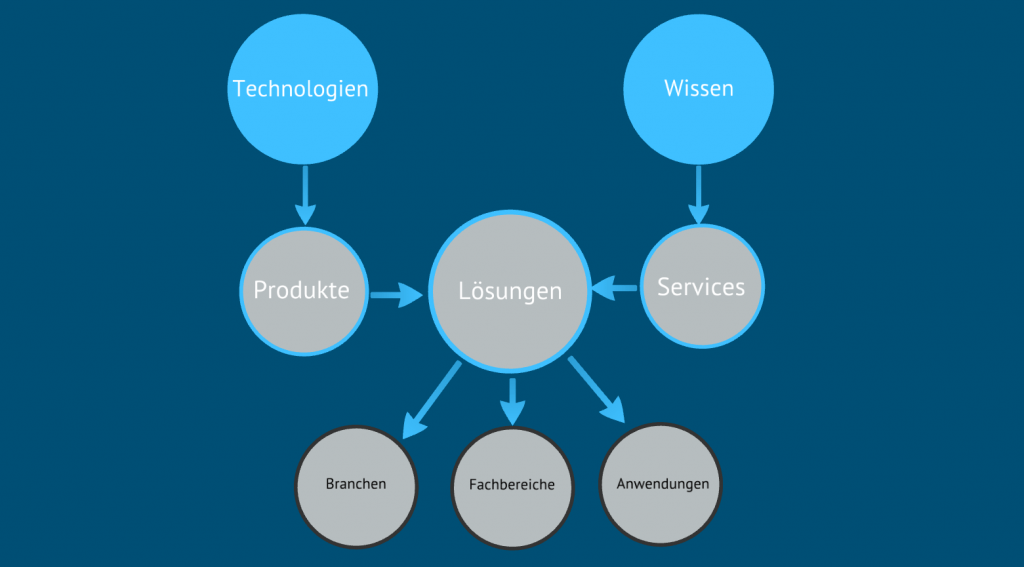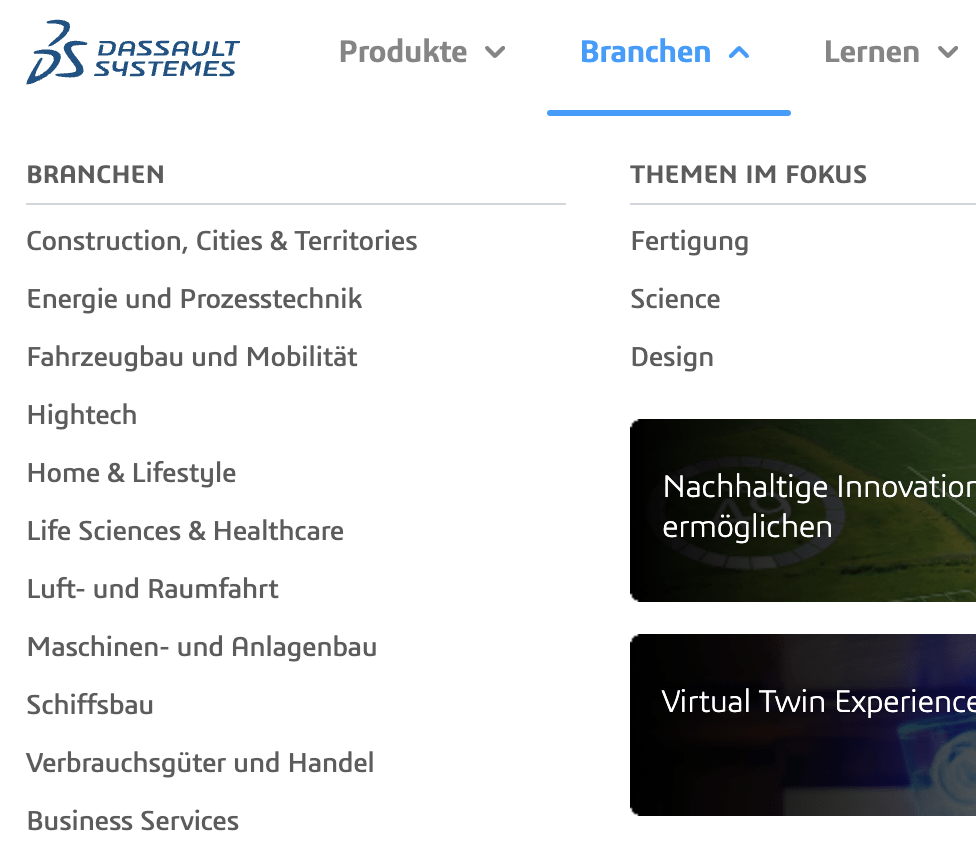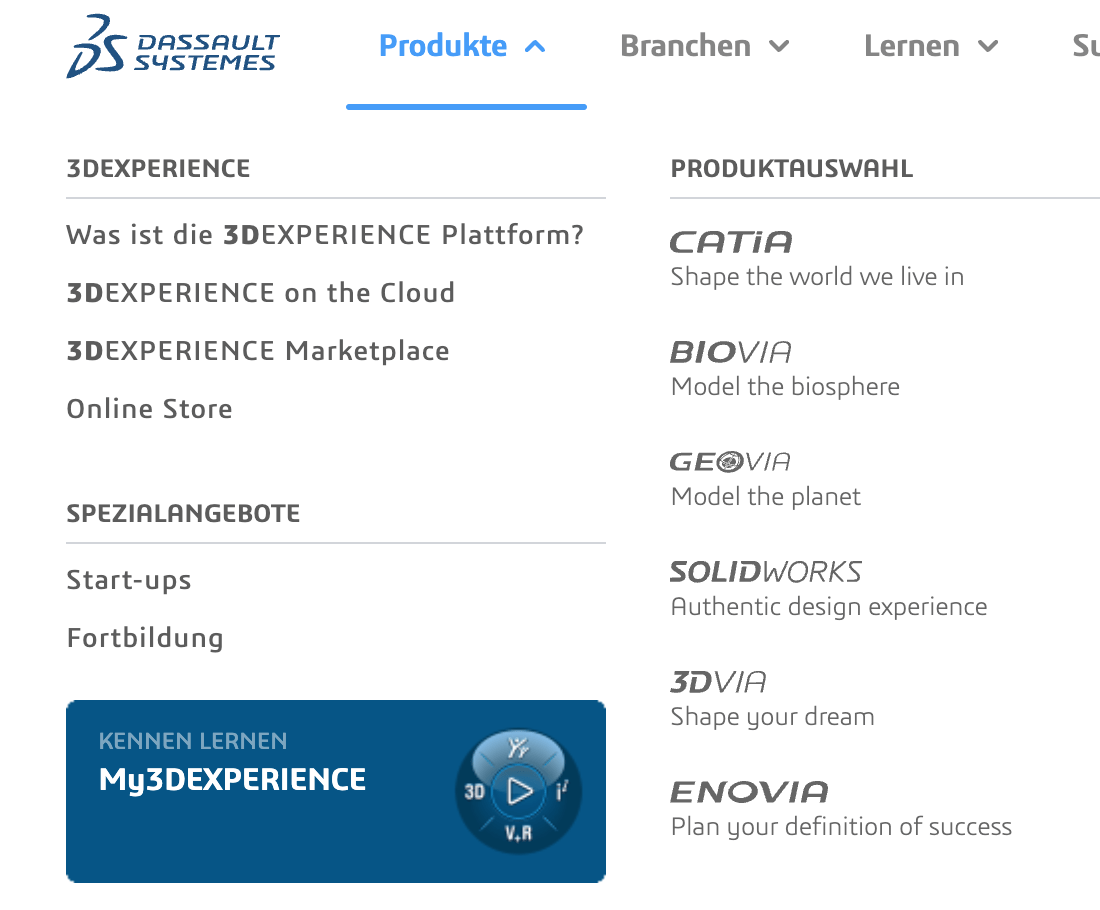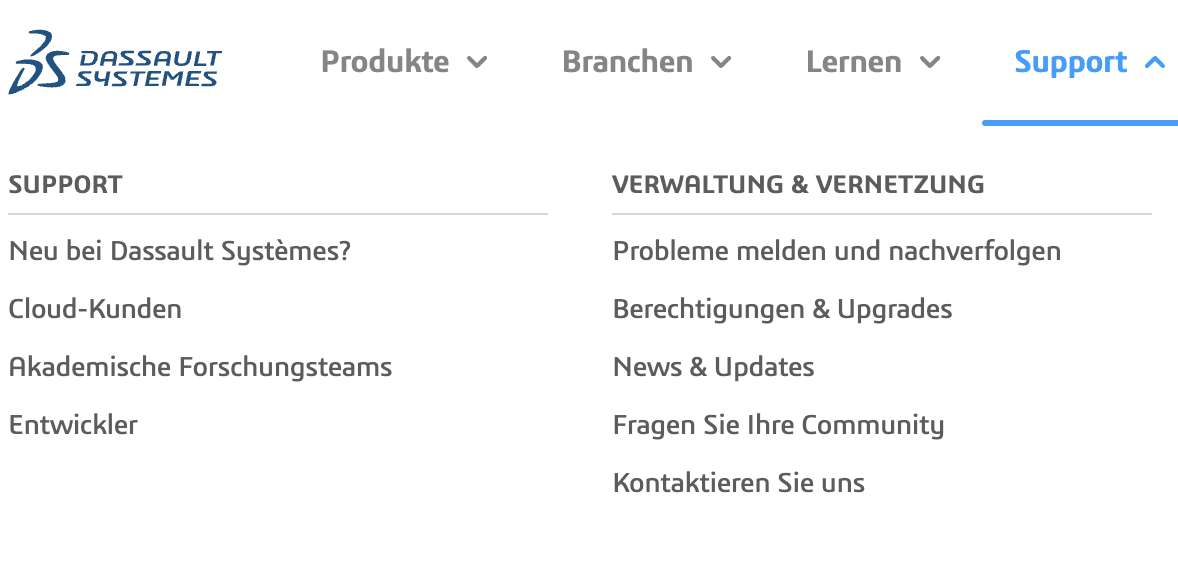Wie du deine Unternehmens- und Website Struktur planst und optimierst

Viele Unternehmen wissen nicht, wie sie eigentlich aufgebaut sind. Das gilt in besonderem Maße für Großunternehmen. Und wenn Unternehmen die eigene Struktur nicht verstehen, wie sollen sich dann Kunden innerhalb der Website Struktur zurechtfinden? Konzerne wachsen ständig organisch weiter und neue Bereiche werden an die Struktur “angeklebt”. Anschließend sieht die Unternehmensstruktur aus, wie das Haus der Weasley Familie aus Harry Potter. Der “Fuchsbau” wirkt, als wäre er ein alter Stall, der an allen Ecken und Enden um zusätzliche Räume erweitert wurde. Das Gebäude ist so schief und bunt zusammengewürfelt, dass es aussieht, als könne es nur durch Magie zusammengehalten werden.
Ähnlich geht es vielen Unternehmen, die neue Bereiche und Branchen erschließen, andere Unternehmen aufkaufen oder auf andere Art organisch wachsen.
Severin Bischof und Thomas Rudolph von der Universität St. Gallen untersuchten im Jahr 2019 die Zunahme von organisationaler Komplexität in Unternehmen. Sie identifizierten eine “Unklare Organisationsstruktur” als zweitwichtigsten Treiber von Komplexität in Unternehmen. In vielen Fällen verstehen Mitarbeiter ihr eigenes Unternehmen nicht, die Art der Zusammenarbeit der unterschiedlichen Geschäftsbereiche ist nicht festgelegt und Zuständigkeiten nicht abschließend geregelt.
Neue Bereiche werden nicht oder nur ungenügend in bestehende Strukturen eingegliedert, was zu einer konfusen, zusammengewürfelten Konstruktion aus Unternehmensbausteinen führt. Diese Komplexität ist intern ein Problem, mit dem Unternehmen sich auseinandersetzen müssen. Mindestens genauso wichtig ist jedoch die Außenwirkung.
Kunden sind die wichtigste unternehmensexterne Gruppe, die B2B Unternehmen ansprechen müssen. Neben potenziellen Kunden, die noch keine Transaktion durchgeführt haben, müssen auch Bestandskunden gezielt angesprochen werden.
Deshalb ist das Verständnis über die eigene Unternehmensstruktur und das Lösungsportfolio die Basis der Content Strategie. Mit dieser Ausrichtung werden anschließend die Interessengruppenangesprochen.
Doch wie kann ein Unternehmen, das seine eigene Struktur nicht mehr versteht, dem Kunden übersichtliche Informationen zur Verfügung stellen?
Zuerst muss klargestellt werden, dass die folgenden Ausführungen selbstverständlich auch für übersichtliche und gut geplante Unternehmen gelten. In diesem Fall fällt die Umsetzung deutlich leichter.
1. Klare Trennung des Angebotes auf Basis von zur Verfügung stehenden Technologien und dem Wissen der Mitarbeiter
Das Angebot eines Unternehmens setzt sich aus den angebotenen Technologien und dem zugehörigen internen Wissen zusammen.
Die Technologien umfassen sämtliche entwickelten Systeme und Ideen, die im Unternehmen umgesetzt werden. Hieraus lassen sich beispielsweise Patente anmelden und neue Produkte schaffen. So bilden die Technologien die Ausgangsbasis für alle Produkte, die das Unternehmen schafft und verkauft.
Das Wissen umfasst das gesamte interne Know-how der Mitarbeiter. Es bildet die Basis der Wissenskommunikation und kann in Form von Whitepapern, Blogbeiträgen oder Vorträgen verbreitet werden. Außerdem zeigt sich große interne Kompetenz auch über Wissensvermittlung durch Support und Kundenservice.
Im B2B Content Marketing konzentrieren sich viele Unternehmen auf die Kommunikation ihrer Produkte. Marketing zielt darauf ab, das Produkt zu vermarkten und die Kunden darauf aufmerksam zu machen. Die zugehörigen Leistungen wie Support, FAQ und Beratung werden häufig nicht als gleichwertiges Verkaufsargument genutzt.
Deshalb muss identifiziert werden, welche Leistungen das Unternehmen im Bereich Wissen zu bieten hat. Diese Leistungen werden anschließend vom Bereich Technologien getrennt und weiterentwickelt.
2. Verschmelzung von Produkten und Services zu Lösungen
Aus den internen Technologien entwickeln Unternehmen Produkte. So kann eine Technologie, die auf einem Patent beruht für zahlreiche Produkte und Produktvariationen genutzt werden.
Nachdem das Produktportfolio und die dazugehörigen Services klar definiert sind, müssen sie sinnvoll zu ganzheitlichen Lösungen kombiniert werden. Das heisst, dass Produkte nie für sich alleine, sondern immer in Kombination mit unterstützenden Maßnahmen verkauft werden. Hierzu zählen beispielsweise eine umfassende Beratung zur Produktfindung oder After Sales Services wie der Support.
3. Differenzierung der Lösungen nach Branchen, Fachbereichen und Anwendungen
Die Lösungen, die von Unternehmen verkauft werden, können nach unterschiedlichen Kategorien differenziert werden.
Branchen
Manche Hersteller differenzieren nach Branchen und bieten ihre Lösungen beispielsweise für den Automobilsektor, die Konsumgüterbranche und die Gesundheitsbranche an.
Beispiel: SAP bietet Softwarelösungen für zahlreiche Branchen an. Je nach Anforderungen und Bedürfnissen der speziellen Branche wird der Leistungsumfang der Software entsprechend angepasst.

Fachbereiche
In anderen Fällen wird nach Fachbereichen differenziert. Hier wird eine Lösung beispielsweise innerhalb des Automobilsektors für unterschiedliche Fachbereiche dieser Branche angeboten. Differenziert wird hier zum Beispiel in Hersteller, Zulieferer und Werkstätten.
Beispiel: Eine Software zur Fehlererkennung bei Autos und anderen Motorbetriebenen Fahrzeugen wird angeboten für den Hersteller, der seine Autos nach Fertigstellung prüfen möchte. Außerdem ist die Software für Werkstätten, wo Fehleranalysen die Basis einer Autoreparatur sind, optimiert.
Anwendungen
Auch eine Differenzierung nach Anwendungen ist möglich. So kann eine Projektmanagementsoftware sowohl für den Anwendungsbereich “Planung” als auch für die Anwendung “Erfolgsmessung” eingesetzt werden.
Beispiel: Dassault Systémes bietet Lösungen im Bereich 3D-Modellierung an. Hierzu zählen neben der Planung von Projekten auch die Umsetzung und anschließende Auswertung des Erfolges. Beispielsweise durch 3D-simulierte Crash Texts.
Darstellung der Unternehmensstruktur in der Content Strategie und der Website Struktur
Der strukturelle Aufbau eures Unternehmens scheint für die Kunden auf den ersten Blick nicht sonderlich relevant zu sein. Doch was, wenn sich Interessenten über dich und dein Leistungsportfolio informieren wollen? Dann musst du zumindest im Kern verstehen, wie sich deine Lösungen zusammensetzen.
Der erste Anlaufpunkt für Informationsgewinnung zu deinem Angebot ist deine Website Struktur. Um sich innerhalb der Unternehmens-, Produkt-, und Websitestruktur zurechtzufinden, ist die Hauptnavigation von zentraler Bedeutung. Deshalb sollte diese klar und übersichtlich sein. Sie ist die Basis der Content Strategie auf der Website.
Beschränke dich in deiner Website Struktur wenn möglich auf die folgenden Punkte. Sie bilden die Basis eines übersichtlichen Menüs und sollten nicht durch zu viele weitere Aufzählungen in der Masse untergehen.
Im Folgenden soll die Menüstruktur des Softwareunternehmens Dassault Systèmes exemplarisch herangezogen werden.
Der erste Menüpunkt der Website Struktur sollte sich um deine Lösungen drehen.
Welche Lösungen bietest du an?
Für wen bietest du diese Lösungen?
Du musst dich hier entscheiden, welche der oben beschrieben Differenzierungsmöglichkeiten für dich am wichtigsten ist. So nennst du diesen Menüpunkt beispielsweise “Branchen” und listest darunter sämtliche Branchen auf, für die deine Services geeignet sind. Für die Website Struktur ist dieser Punkt besonders wichtig, da Interessenten und Kunden sich sofort angesprochen fühlen, wenn sie ihre eigene Branche in der Liste finden.
Wenn dir die Einteilung deiner Lösungen nach Branchen nicht ausreicht, kannst du auch mehrere Differenzierungen unter dem Menüpunkt “Lösungen” zusammenfassen. So kannst du außerdem beispielsweise nach Anwendungen differenzieren. Dieser Menüpunkt könnte “Anwendungsbereiche” heißen und Unterpunkte wie (im Beispiel Fahrzeugbau) “3D-Modellierung”, “Crash-Test-Simulation” und “Erfolgsmessung” beinhalten.
Bei Dassault Systèmes wird nach Branchen differenziert. Der Menüpunkt steht an zweiter Stelle.

Der zweite Menüpunkt zeigt deine Erfahrungen.
Neben Kompetenz willst du auch Vertrauen kommunizieren. Besonders gut eignen sich hierfür Referenzen und Fallbeispiele, in denen deine Lösungen erfolgreich zum Einsatz gekommen sind. Zeige hier, was du kannst. So regst du die Fantasie deiner Interessenten an und zeigst, was mit deinen Produkten alles möglich ist.
In der Website Struktur von Dassault Systèmes sind Kundenberichte sehr versteckt (ganz rechts unten). Wer Referenzen ansehen möchte, muss sehr gezielt danach suchen. Dieser Punkt sollte hier unbedingt verbessert werden.
Der dritte Menüpunkt der Website Struktur listet die Produkte auf
Wenn du unterschiedliche Produkte im Portfolio hast, sollten diese hier aufgelistet sein. Wenn die Anzahl zu groß wird, können die Produkte auf zwei Navigationspunkte aufgeteilt werden.
Dassault Systèmes bietet zahlreiche Produkte im Bereich 3D-Modellierung an. Diese sind im Menü übersichtlich und prägnant dargestellt.

Der vierte Menüpunkt enthält Services und Support
Der wichtigste Unterpunkt der Services ist in der Regel der Support. Hier können Kunden direkt Kontakt aufnehmen und Fragen stellen.
Zu den Services zählen aber auch Schulungsangebote, Communitys oder eine FAQ Sektion.
Die Services sollten im Menü prägnant dargestellt sein, da sie zentraler Bestandteil der verkauften Lösungen sind. Wer eine deiner Lösungen kauft, kauft automatisch deinen Kundensupport und deine zusätzlichen Leistungen dazu. Deshalb sollten Kunden umfassend über sämtliche zusätzlichen Services informiert werden.
Auf der Website von Dassault Systèmes ist der Menüpunkt “Support” sehr umfangreich ausgearbeitet.

Der fünfte Punkt informiert über euer Unternehmen
Wer seid ihr?
Was ist eure Story?
Kunden möchten vor dem Kauf etwas über dich erfahren. Über deine Philosophie, deine Herkunft oder deine Arbeitsweise. All das kannst du in diesem Menüpunkt unterbringen. Dort kannst du eine authentische Geschichte über euer Unternehmen erzählen und auf Details eingehen, die im Zusammenhang mit deinen Lösungen keine Relevanz haben.
Weitere Menüpunkte wie Kontakt, Blog und Login
Die bereits aufgezählten Menüpunkte sollten die Navigation bestimmen und im Fokus stehen. Doch auch weitere Punkte müssen unter Umständen prägnant platziert werden. Hierzu zählt häufig der Kontakt-Button und in manchen Fällen ein individueller Login-Bereich. Ob du diese individuell stylst oder als zusätzliche Menüpunkte unterbringst, hängt von der Relevanz dieser Bereiche ab.
Dassault Systèmes nutzt für den Login-Bereich ein Icon. Auch der Kontakt-Button könnte so dargestellt werden. Insgesamt ist das Menü des Unternehmens stark auf das Wesentliche reduziert.

Fazit: dein Weg zu einer übersichtlichen Unternehmens- und Website Struktur
Mit der Guideline zur Sortierung der Komponenten eures Unternehmens bist du jetzt in der Lage, auch deine Kommunikation übersichtlich zu gestalten. Du kannst die Komplexität entzerren und die Zusammenarbeit und Kommunikation im Unternehmen maßgeblich verbessern.
Neben passendem Content und einer durchdachten SEO Strategie ist die übersichtliche Navigation der wichtigste Faktor für eine kundenorientierte Website.



